Foggy morning at Mark Smith’s place.

Foggy morning at Mark Smith’s place.

It’s not be raining quite so frequently as earlier in the summer, so yesterday Mark Smith tried again to move logs from the powerline cut up to the area near my wood boiler. We were hoping that the soil would have dried enough to give his skidder some traction. Starting out, things seemed to be going well.
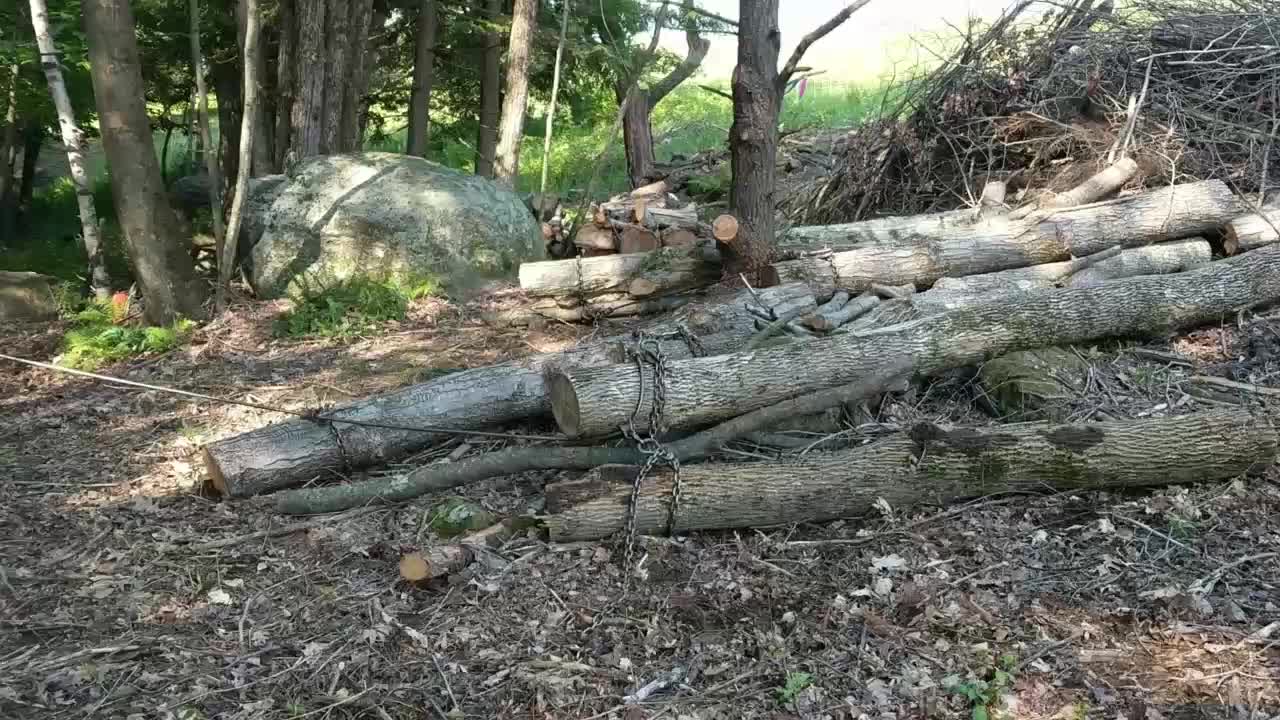
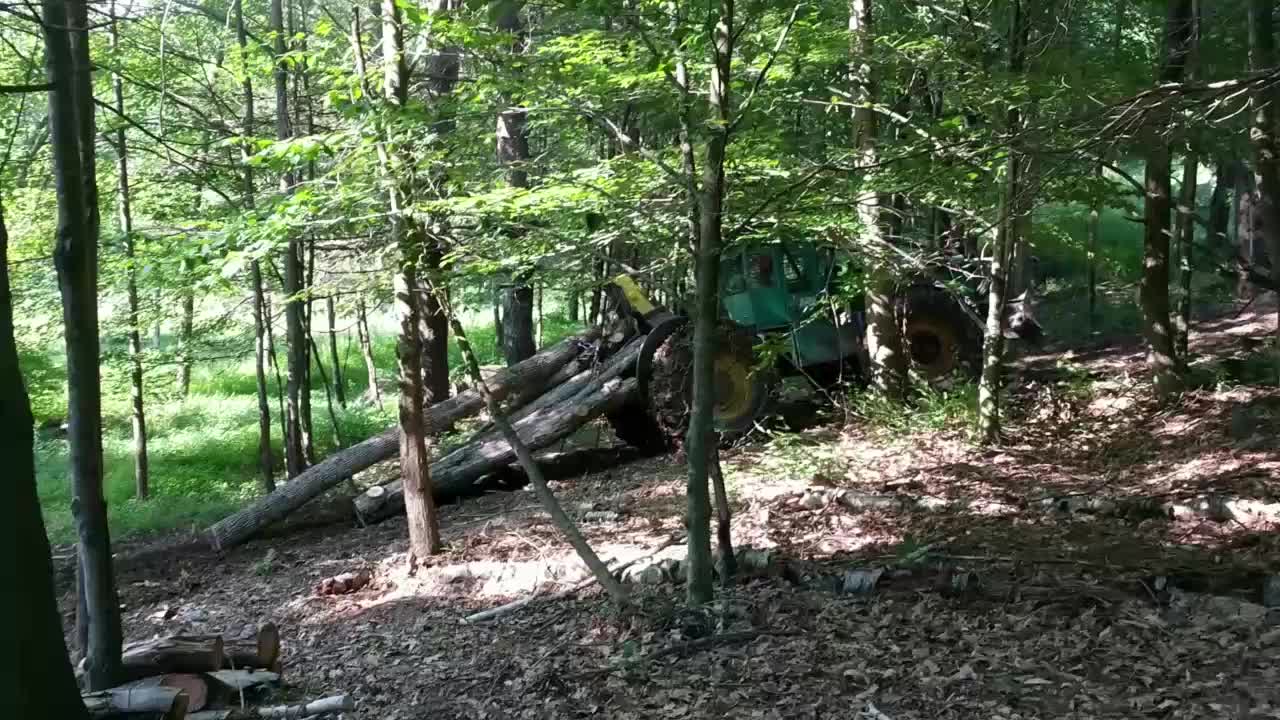

But when he got to the tricky bit that undid him last time, things were not any better
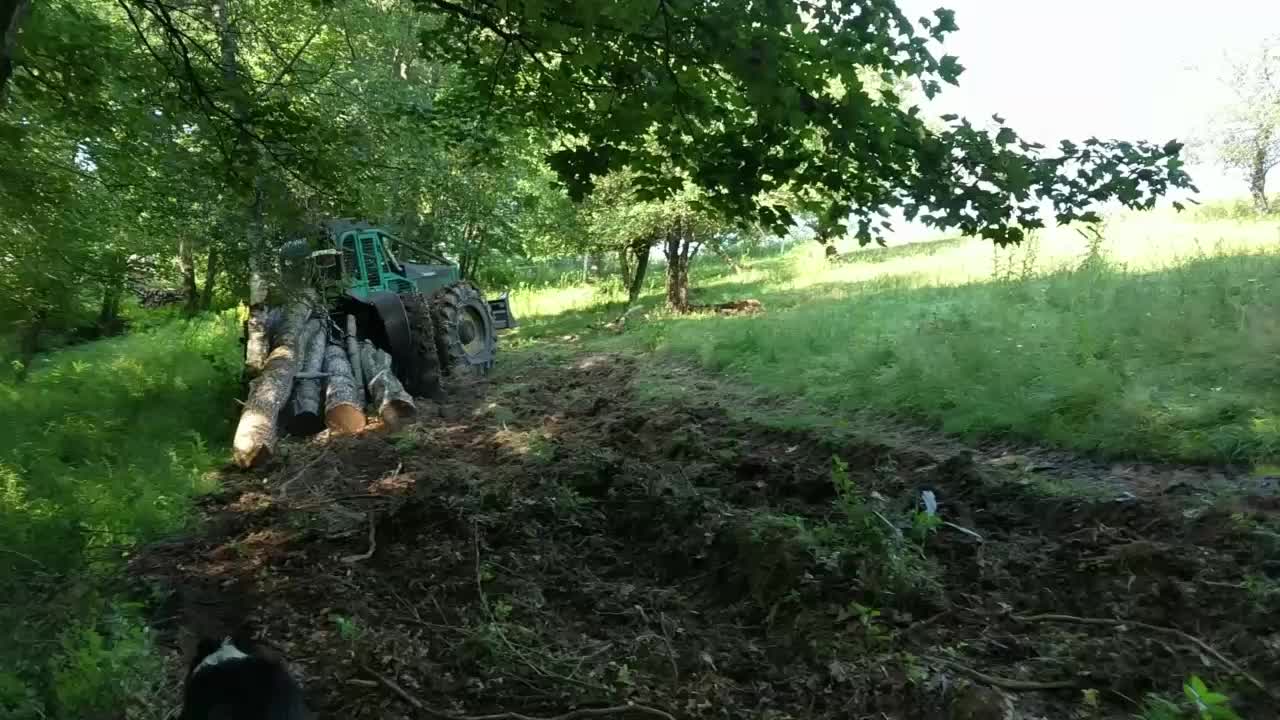
He finished out pulling that load up to the landing, but it was clear that it didn’t make sense to continue.
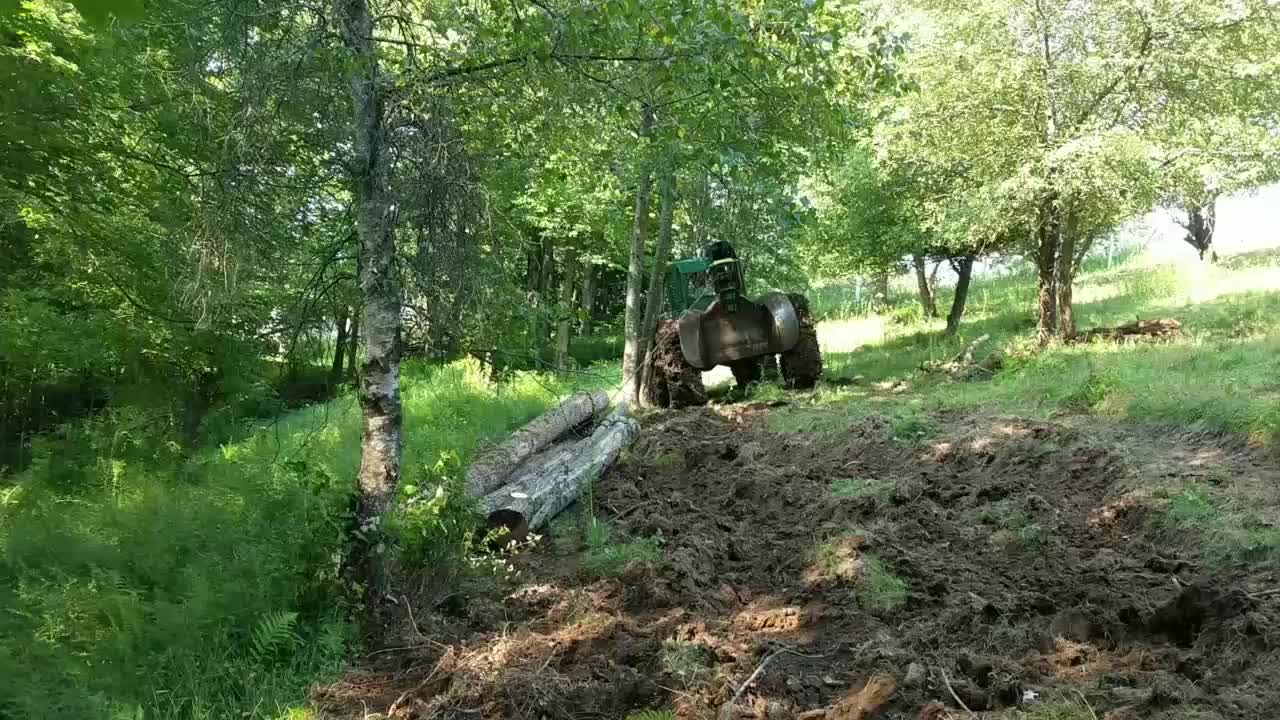
I wasn’t particularly worried when Lefty hung back while the rams and his mother moved to a new paddock. He’s been a little lethargic lately, and hasn’t seemed particularly connected to the rest of the group since his mother stopped nursing him, so I typically move him over to the new grass myself. When I went over to him and saw all the flies, though, I realized that his death wasn’t an exaggeration this time.
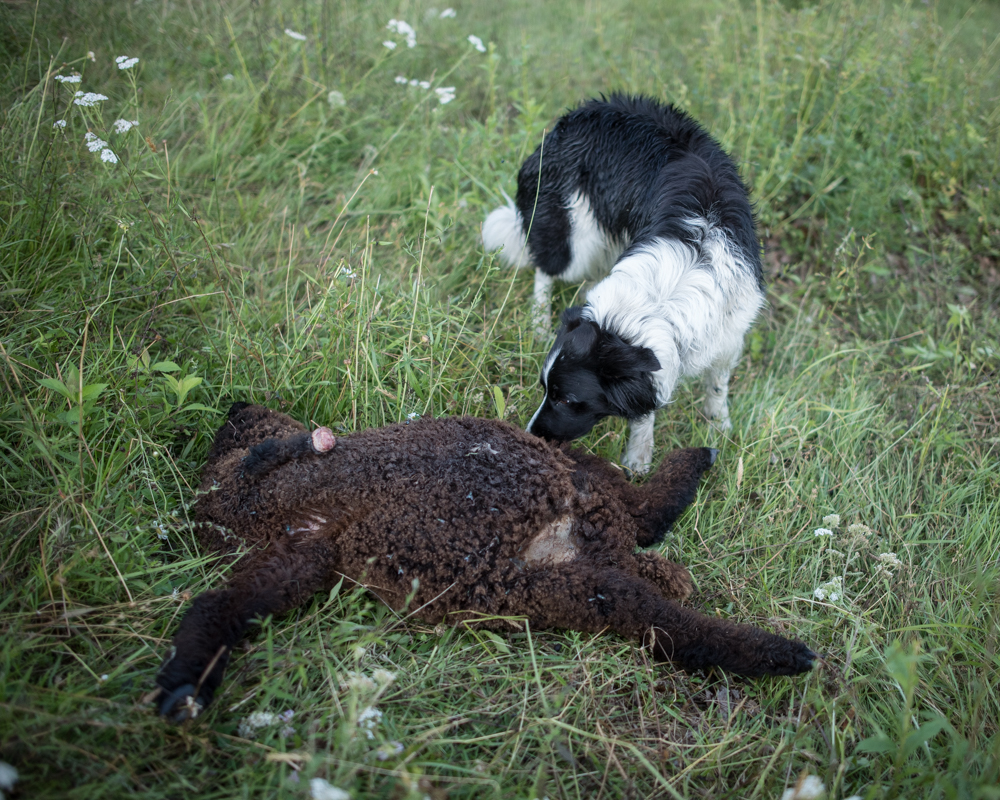
I’m not sure what finally did him in, but his circumstances were dire from the beginning, and I’m mostly surprised that he made it this far. I hope his passing was peaceful, but in retrospect, I wonder if it was really a kindness to have kept him going so long.
Sometimes Luc’s smarts work against him. He’s afraid of the sound of thunder, and during a stormy summer like we’ve been having, he seems to study the circumstances that correlate with thunder so he can anticipate the scary event and hide in the bathroom before it comes. Unfortunately, his correlations aren’t always accurate, and the anticipatory fear can become paralyzing for him. For a couple of weeks, we seemed to be getting thunderstorms almost every evening, shortly after dark; Luc decided he didn’t want to go out for a last pee break before bed if it was raining, thunder or not. Before long, the rain was no longer necessary — he didn’t want to go out in the evening regardless of the weather.

If I begged and cajoled him, he might step outside with me, but he was way too anxious to pee. After a few days of this, I remembered that Luc can take great comfort from being connected to me by a leash; I clipped one on to his collar, and he immediately relaxed and followed me outside to relieve himself. This became our new routine, but a couple of days later, he stopped cowering as soon as I pulled his leash off the hook by the door. I carried the leash with me (not clipped to his collar), and he happily followed me out to mark his usual bush. Carrying the leash worked for the next 2 days, but yesterday, Luc started to hesitate once he got outside. When I showed him that I had the leash with me, though, and he once again relaxed and got to business.
I’m not quite sure how to understand Luc’s behavior except as mastery of an abstract concept, that a leash in my hands represents comfort to him. In any case, I’ve started hiding my credit cards.
Tagged: abstraction, border collie, intelligence, leash, Luc, scary, thunder
The flock now have the option of enjoying the view from the other side of Sullivan, though I’m not sure they’re fully appreciative of it.
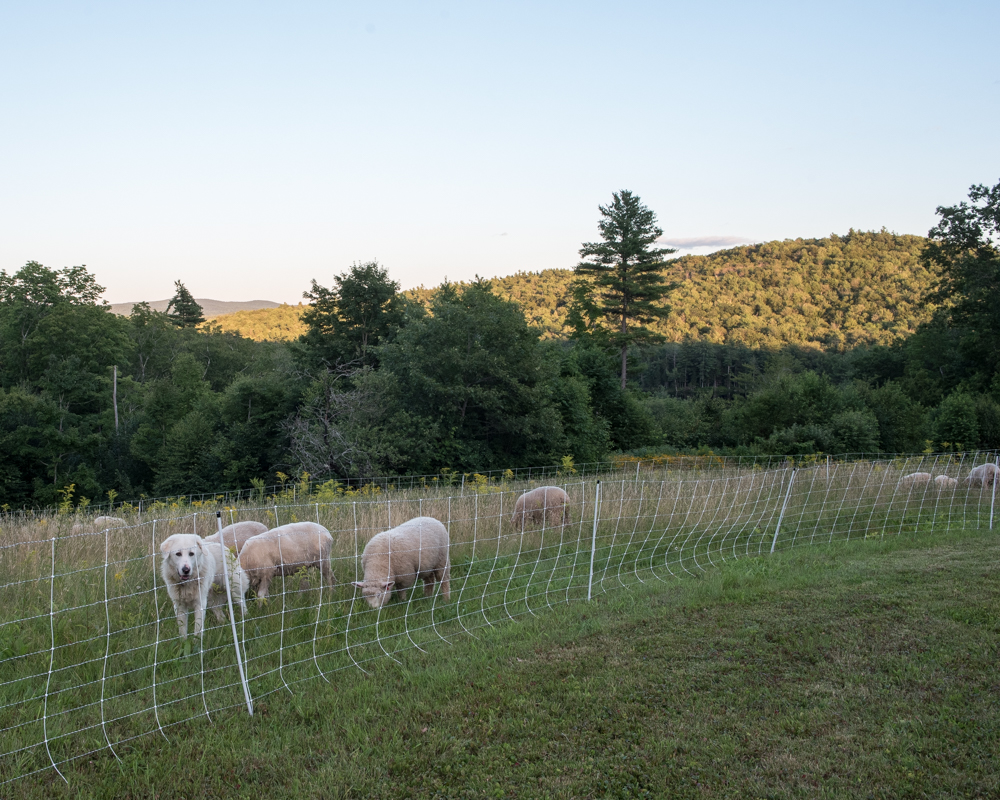
Tagged: bravo, hills, maremma, Mark Smith, sheep, Sullivan NH, sunset, view
Today was my third sheep-moving day.
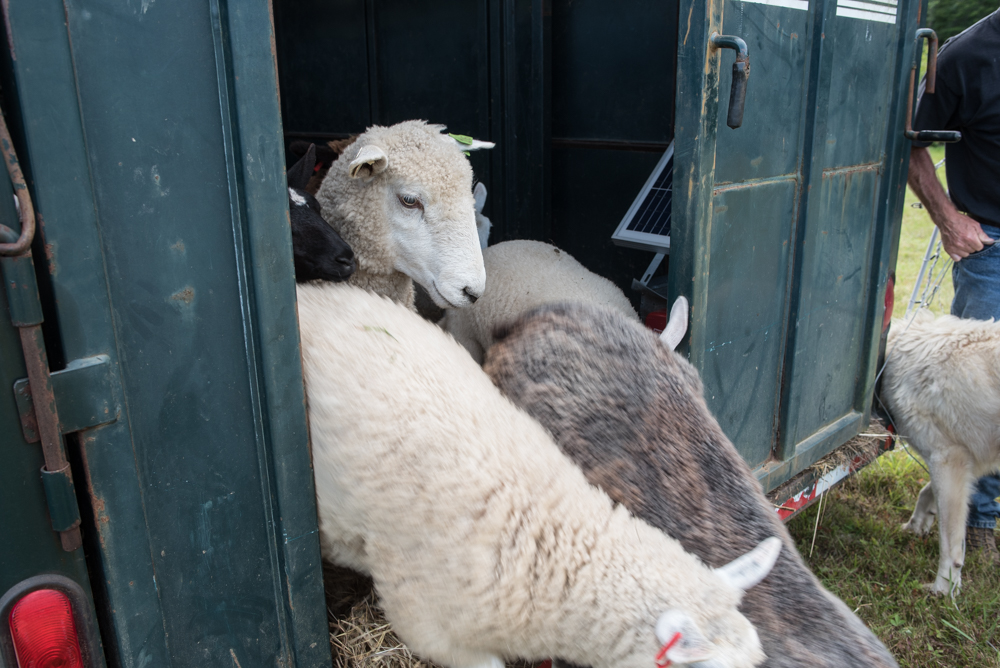
People continue to show up to help (thanks to Holly and Mark today!), and I’m getting incrementally more competent with the various operations involved in the moves, so progress. The sheep are now at Mark Smith‘s place near the top of Sullivan, overlooking Chapman Pond, grazing on lovely pasture that Mark cleared out of dense woods.
Cass does most of the sheep handling on moving days, but Luc really wants to help out. Today he appointed himself Trailer-checker, let me know when sheep were in fact in the trailer, in case I forgot.

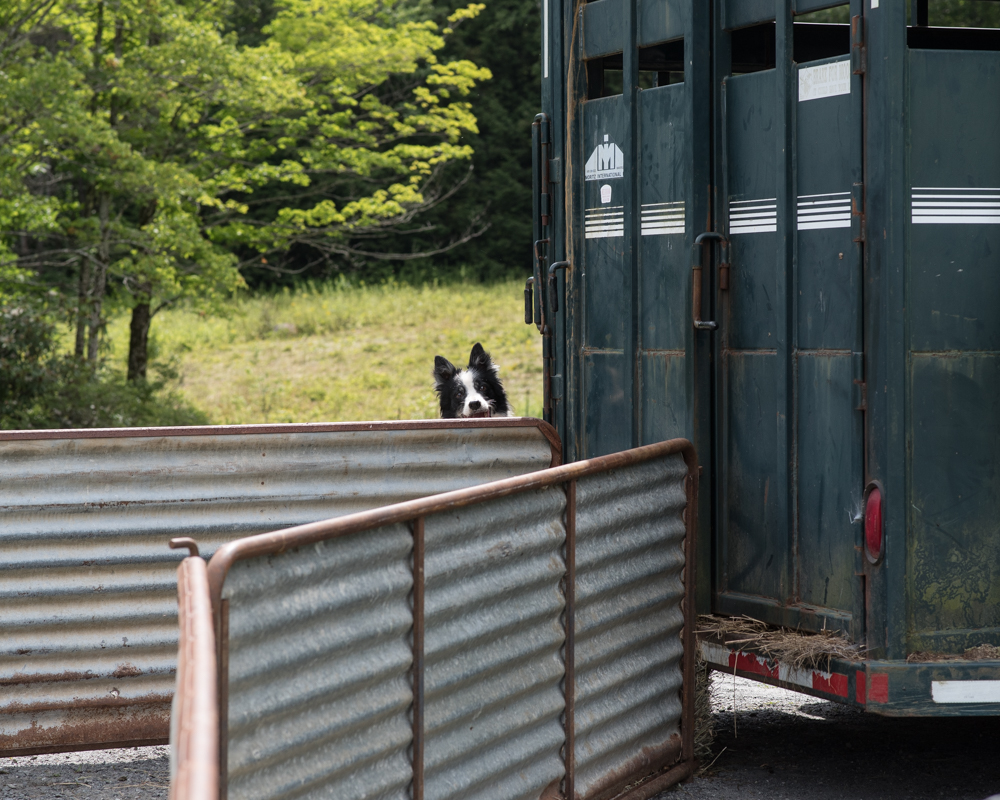
Tagged: border collie, Cass, Chapman Pond, Holly Lorinser, Luc, Mark Smith, moving day, sheep, stock trailer, Sullivan
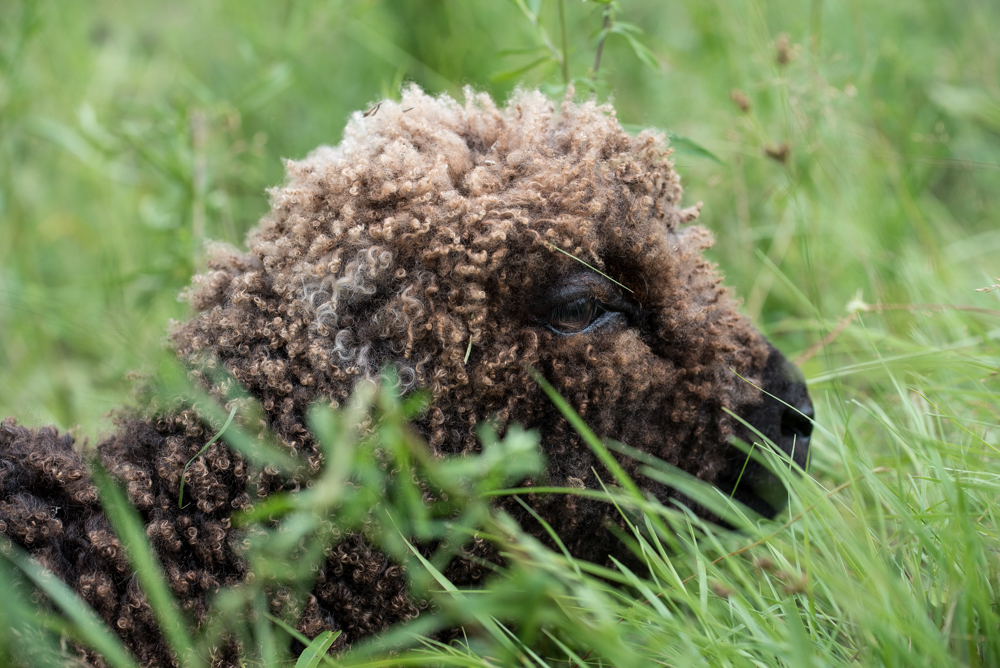
Against odds, Lefty is still with us. His mother seems to have entirely stopped nursing him, probably because she ran out of milk. Lefty is remarkable good at hiding in the grass, but he seems to be grazing whenever I see him. He’s still terribly thin, but I think that’s not inconsistent with his circumstances. I do need to check that he doesn’t have a parasite load further sapping his energy. I’m very much hoping he continues to hang in; his role as ram mascot is secure if he wants it.
I’m sure the DSM has some listing for people like me, those who feel personally slighted by inanimate objects. But I don’t care what the shrinks say — my solar fence charger deserves all the animus I heap on it.
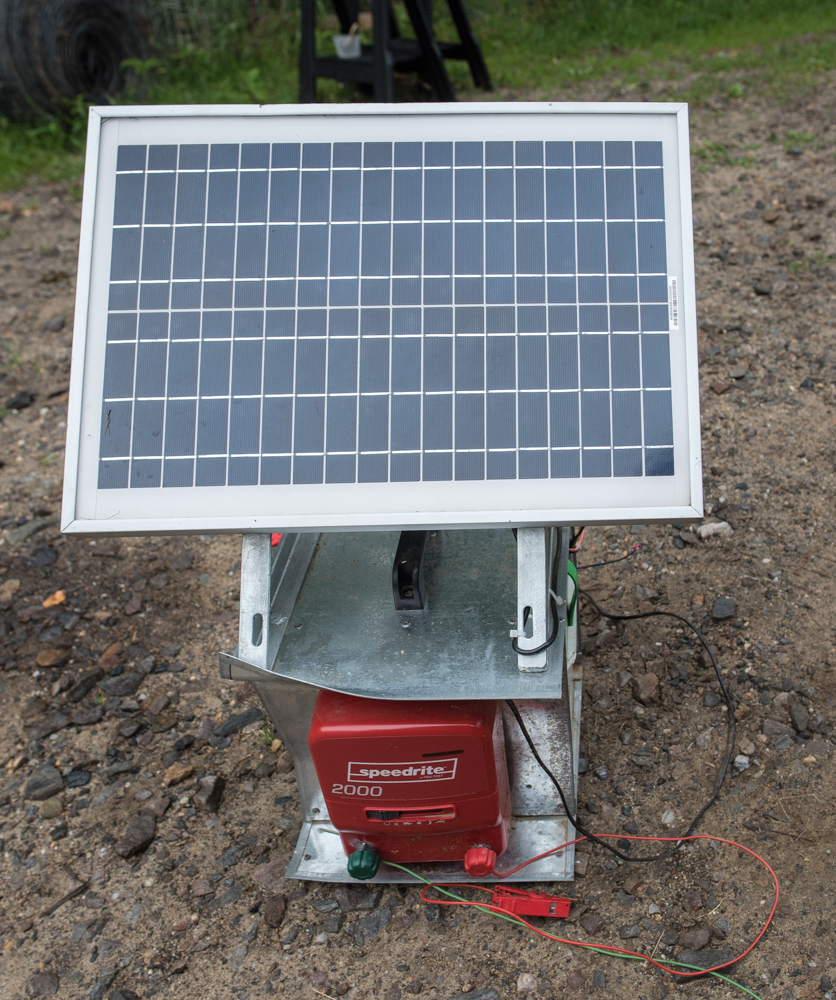
It is, by definition, a portable charger that you carry out to the pasture wherever your sheep and fence are going to be. But it weighs something like 80 pounds with the marine battery in it, and the placement of the handle can be charitably described as a sadistic joke.

And if you do find a way to pick it up, the battery immediately slides out the side, tearing off the delicate wires connecting it to the electronics of the fence energizer. When I’m not too distracted cursing the industrial designer who created it, I’ve been imagining how to build a device that would allow me to move the energizer over rough ground without danger to my back or my sanity. Procrastination and frustration reached an inflection point the other day, and I took a crack at it, with help from Patrick Daniels, welder extraordinaire.
We started with a 2-wheeled dolly, shortening the handle and elongating the base.
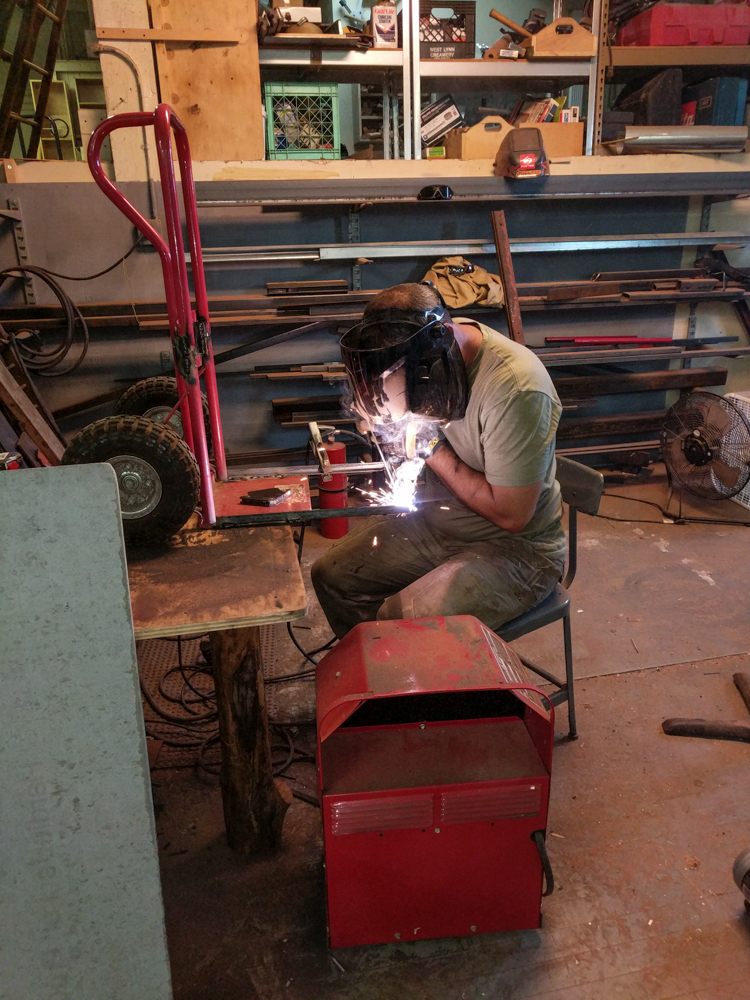
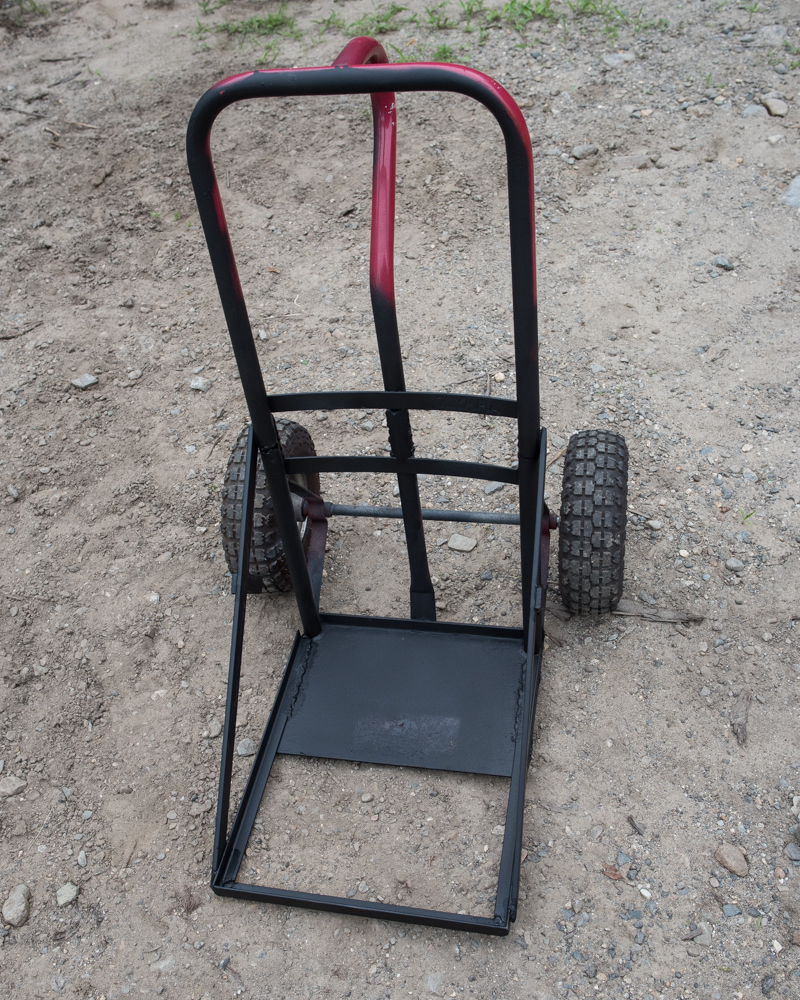
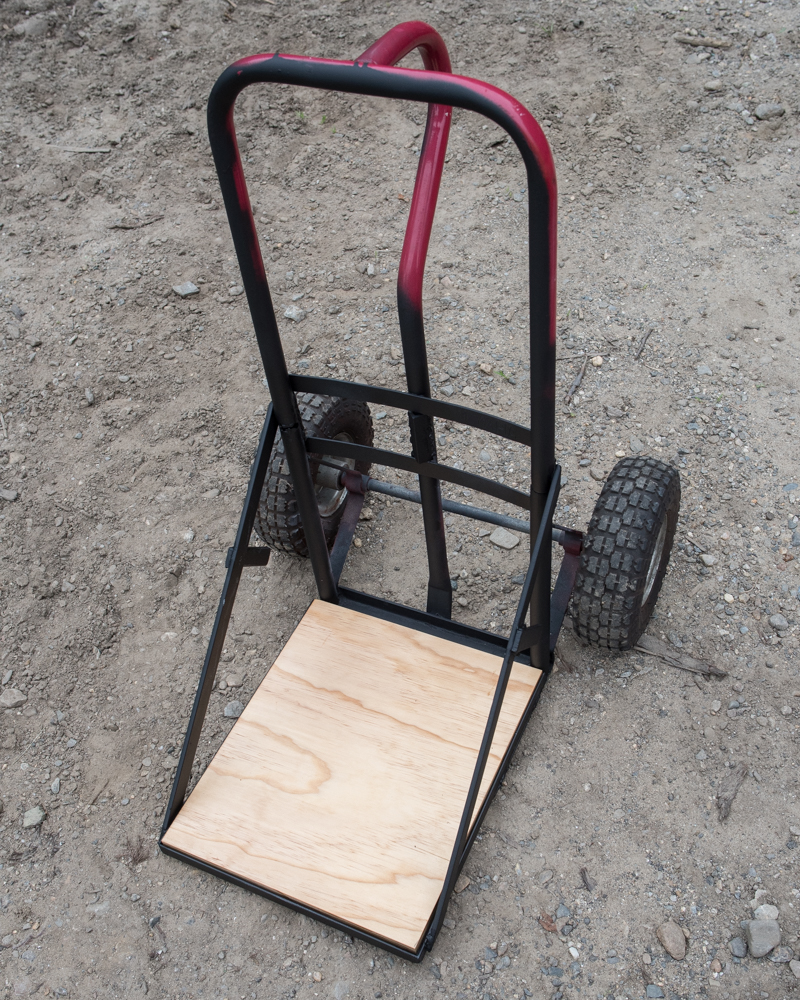
The energizer fit nicely in its new cradle,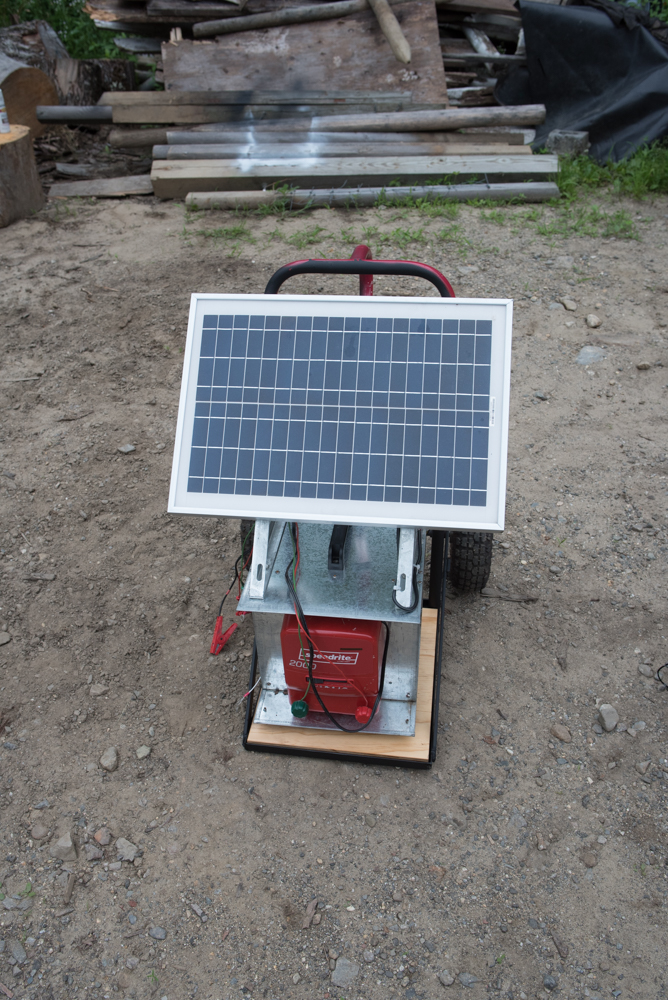
but as soon as I tried to move it up a steep, rough hillside, I discovered the flaw in my design.
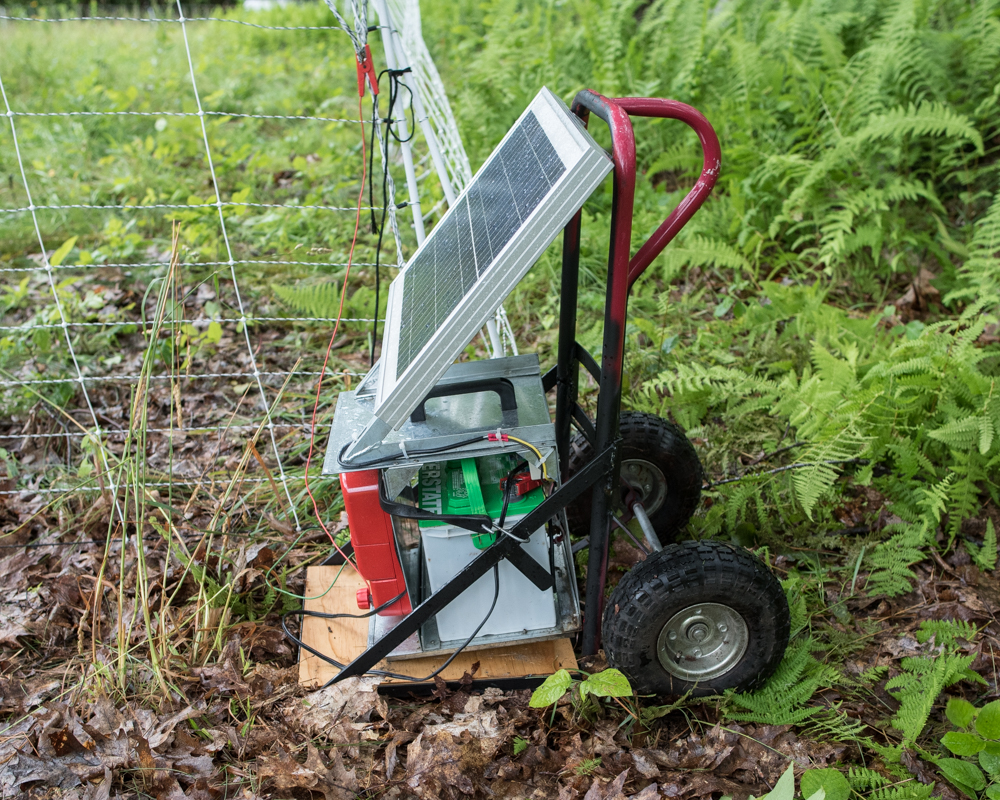
The wheels are so far behind the load that the balance point puts the handle more or less parallel with the ground. My back is still aching from the first outing. So while I’d like to imagine that I’d never mount the handle under the solar panel, it seems that this industrial design thing may be harder than it first seems.
It’s neither my birthday nor Christmas, but I got another present from the previous owners of my farm today. I’ve been cleaning up debris and non-functional fence since I moved here, and recently removed the last major section of broken fence. I was pretty certain that we had removed all the random scraps of metal in that area of pasture, but when I tried to mow it today (with the brand-new flail mower), I found one more piece of discarded wire fence buried in the grass. Here’s the view from underneath after I’d started cutting some of it away:
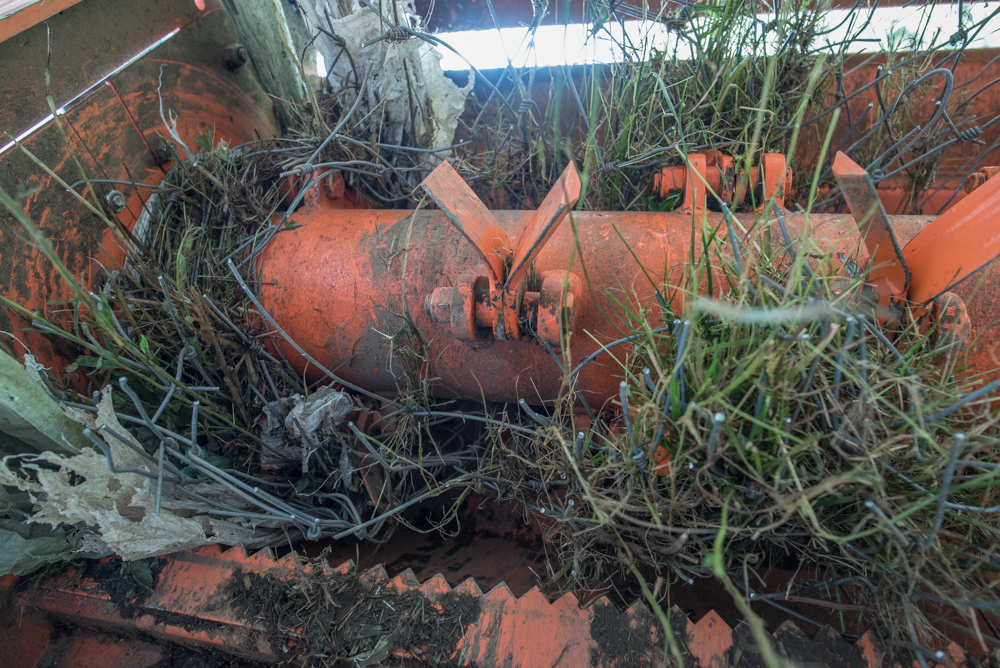
The process of cutting out the woven wire fence that was wrapped around the cutting head of the mower — snip, snip, snip, with no appreciable progress for the longest time — felt surprisingly similar to removing an infinite number of porcupine quills from a dog’s face, though I assume the mower didn’t feel any pain. Eventually I started to make some progress,
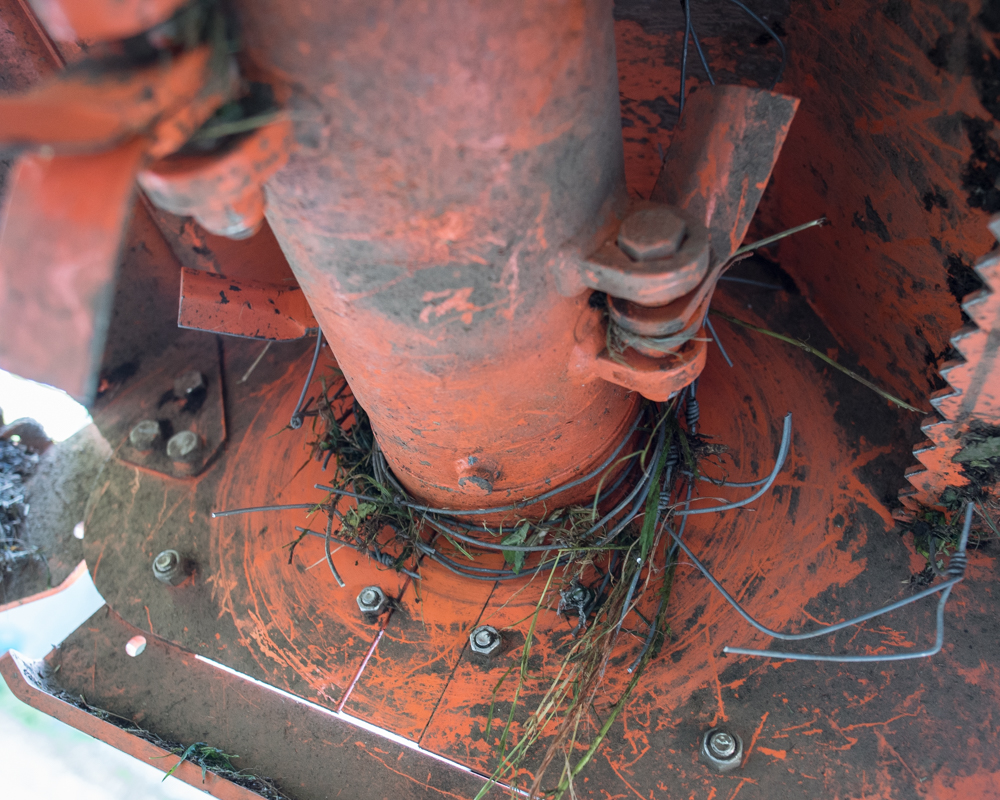
and finally got it all cleared:
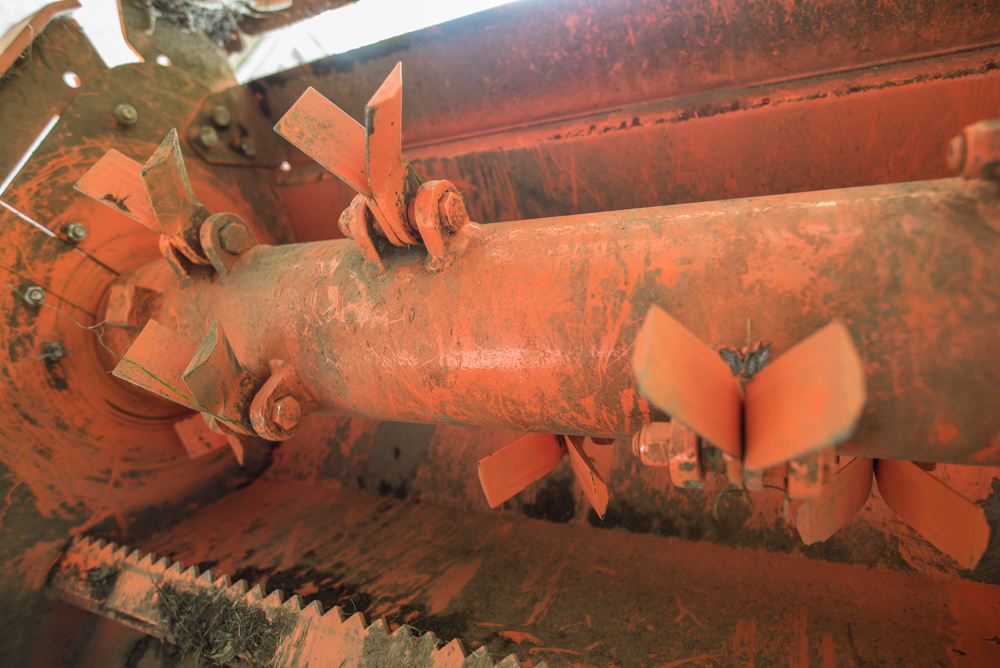
And here’s my gift, after unwrapping:
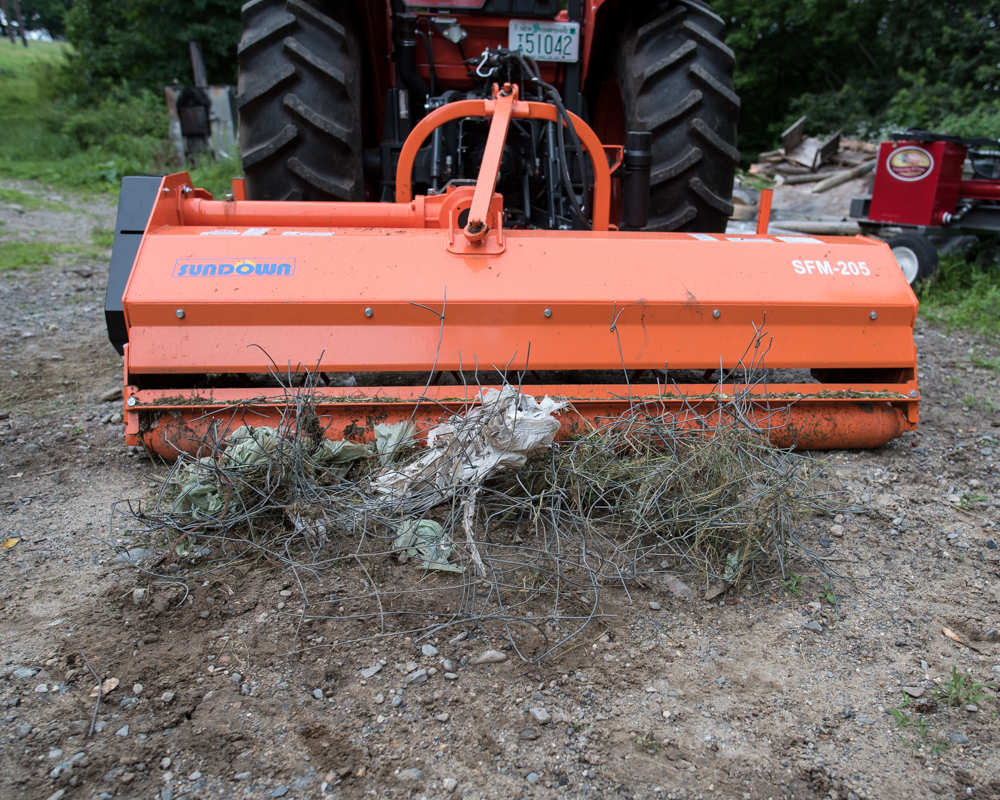
Since the incident with the peach leaves, Bill and I have been talking on and off about toxic pasture plants. Both the University of New Hampshire and the University of Vermont publish guides to toxic pasture plants, but both seem to be written more with liability in mind than edification. Any plant with even the remotest risk of animal toxicity is listed, ad absurdum: the UNH document warns of the danger that acorns pose to swine, with no apparent regard for the famous dry-cured hams of Spain, which come exclusively from acorn-fed pigs. The hyper-alarmism of these documents leaves me at a bit of a loss trying to decide what really poses a danger to my flock.
I was confused, for example, when I saw one of my sheep seeking out and eating milkweed leaves this morning.
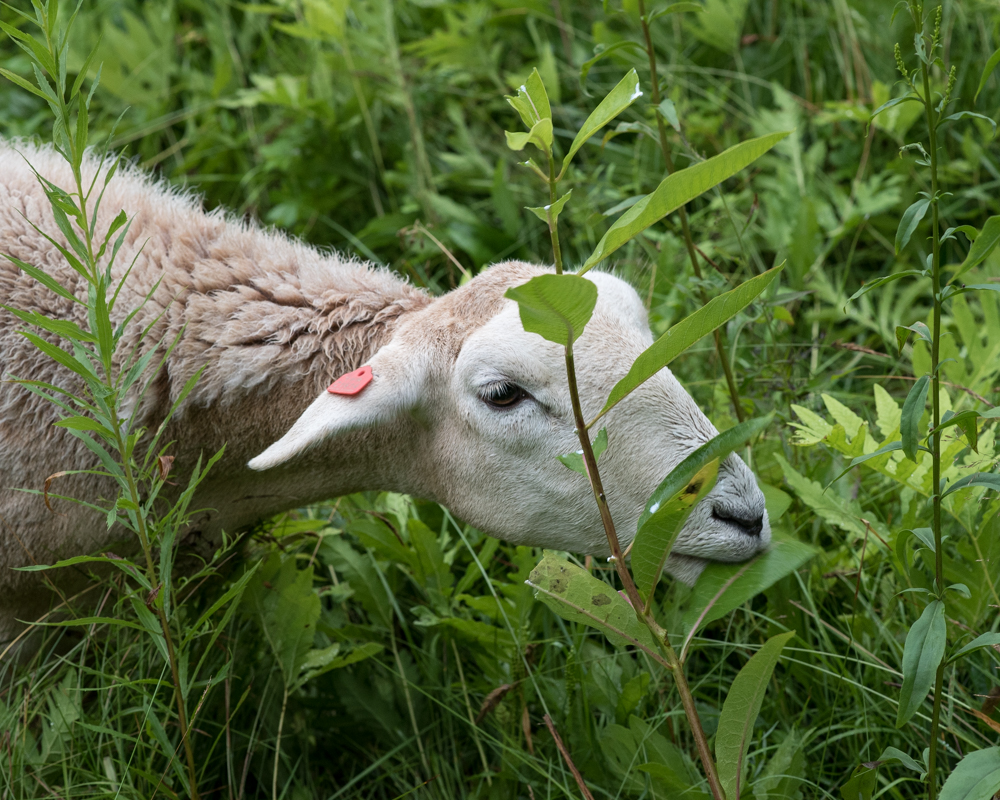
Both the UNH and UVM documents list it as toxic, but rate its danger as low since it is supposed to be very unpalatable to sheep — unless the flock has no other options, they won’t get poisoned by eating milkweed. In this case, though, I had just moved the flock into a new section of pasture, and I watched this ewe seek out and eat all the milkweed she could find. She showed no sign of being dead this evening, so I’m assuming that at some level she knows what she’s doing. Livestock people sometimes talk about “nutritional wisdom” in their flocks, whereby their animals will choose to eat plants that meet their evolving nutritional or medicinal needs. It’s very appealing to imagine that this morning’s milkweed-eater was addressing some specific need of hers, but I’m not equipped to do more than wish and speculate at the moment.
When I first went out to the flock this morning, I had to think about the other side of plant choice question. At first, it seemed that there was lots of forage left in the section of pasture where they’d spent the night.
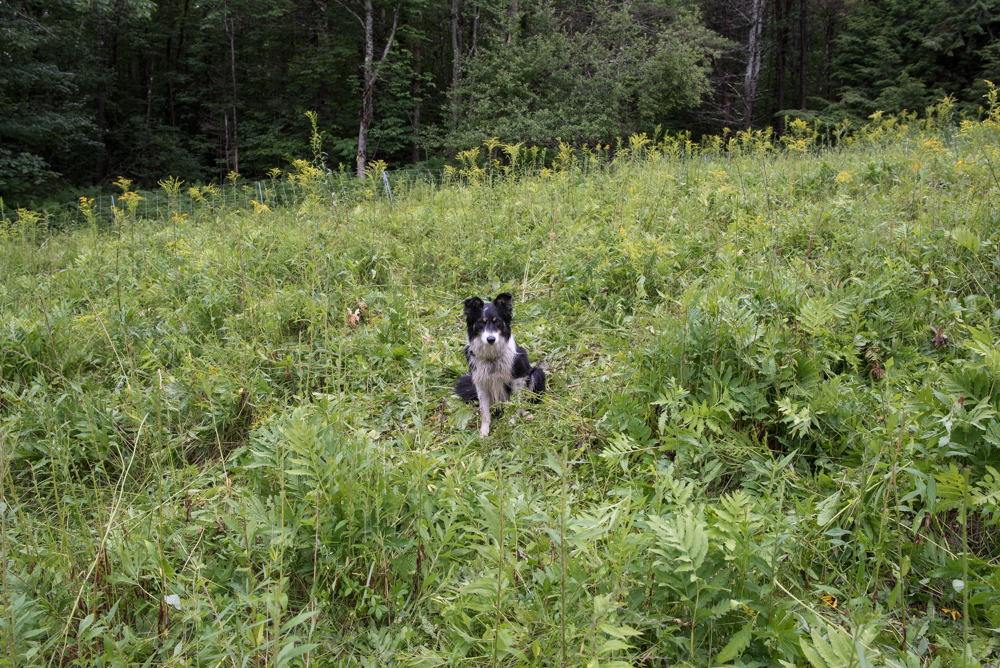
But when I looked more closely, I realized that the sheep had selectively eaten virtually everything in the pasture expect for the ferns.
 I decided that my initial sense that the sheep could continue to graze this section was probably wrong. If they had gone to the effort of eating around the ferns during the time they’d been grazing this section, leaving them to continue grazing would undermine any nutritional wisdom they might possess. Once they got hungry enough, they would probably go back for the ferns they initially passed over; perhaps they just didn’t like the taste of sensitive fern (Onoclea sensibilis), but I didn’t want to take the chance that it was nutritionally deficient or actively harmful.
I decided that my initial sense that the sheep could continue to graze this section was probably wrong. If they had gone to the effort of eating around the ferns during the time they’d been grazing this section, leaving them to continue grazing would undermine any nutritional wisdom they might possess. Once they got hungry enough, they would probably go back for the ferns they initially passed over; perhaps they just didn’t like the taste of sensitive fern (Onoclea sensibilis), but I didn’t want to take the chance that it was nutritionally deficient or actively harmful.